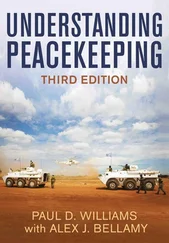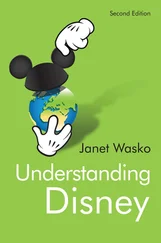Did you know that there are sexual-orientation “tests” in male sheep (rams)? And no, I do not mean measures of genital responding while the rams view pictures of sheep, or even a “drunk test” (see chapter 2). In the United States Sheep Experiment Station in Dubois, Idaho, researchers test the erotic inclinations of their animals by allowing rams to have access to two “stimulus” females (ewes) in estrus or to two “stimulus” rams. These sexual-orientation tests occur in specialized pens, over repeated time periods (e.g., three thirty-minute exposures). The stimulus animals are restrained, so the test rams have easy access to them. The rams’ sexual interest is measured by observing various mating behaviors characteristic of these animals: sniffs, kicks, mounting attempts, and “flehmans” (i.e., head raisings with curling of the upper lip) (Roselli, Larkin, Schrunk, & Stormshak, 2004).
But why would researchers test rams for their erotic inclinations in the first place? They do so to understand and ultimately increase the productivity of rams for sheep farmers, who want, as you might expect, stud rams to produce lots of little lambs.
If the rams are sexually attracted to ewes, they are called FORs (female-oriented rams); if they are attracted to other rams, they are called MORs (male-oriented rams). If they are attracted to neither, they are called NORs (no-oriented rams), or asexuals.
A surprisingly high percentage are MORs, but equally surprising is that a high percentage are evidently NORs (i.e., asexual). For example, here is a quote by researchers Charles Roselli and colleagues in a paper summarizing their results: “Over the past 2 years, 584 rams were tested. Of these 12.5% were asexual, 55.6% mounted and attained ejaculation with ewes, 9.5% mounted other rams, and 22% interacted sexually with both males and females” (Roselli et al., 2004, p. 235).
As in rodents, there does not seem to be strong evidence that sexual variation among the rams is related to circulating testosterone. For example, asexual rams (NORs) do not have lower levels of testosterone than the FORS or the MORs (Perkins, Fitzgerald, & Price, 1992), also suggesting that asexual rams may develop their sexual orientation because of prenatal factors organizing the brain in a certain way.
Rams may be especially relevant to understanding human sexuality; indeed, they provide a better animal comparison to human sexual orientation than male rodents, because rams show similar patterns of sexual behavior to human males. For example, MORs actively pursue other males for sexual liaisons, as do human men sexually interested in other men. Thus, sexual orientation patterns in both species, perhaps including asexuality, may emerge because of similar prenatal mechanisms, such as exposure to prenatal hormones organizing sites of the brain (see chapter 13). Indeed, research suggests that structural differences in a site of the lower brain, the SDN-POA (sexually dimorphic nucleus of the preoptic area) of the hypothalamus, is relevant to ram sexual orientation, just as a similar site is likely relevant to men’s sexual orientation (Roselli, Stormshak, Stellflug, & Resko, 2002; LeVay, 1991). However, the researchers have not as yet examined the brains of NORs to determine if this site is related to asexual rams’ sexual orientation.
A final note on these animal studies: They are interesting and well worth considering as they relate to human asexuality, but recall the caution about animal behavior being an imperfect model of underlying attractions, particularly as they apply to human sexual attractions (see also chapter 2 on the attraction/behavior distinction).
Let’s move from natural history to human history. Many humans throughout history have lived their lives without sex. [12] Of course, some of these people may have never masturbated, if one wants to define sexuality broadly, beyond sexual activities with a partner.
A reality of human life, from the emergence of human beings to their existence in the present day, is that some people, even when motivated, do not find mates. These people may have had certain traits—very low physical attractiveness, extreme shyness, or other factors—that made finding a partner difficult. So, a lack of (partnered) sexual behavior is sometimes not a matter of choice.
Sometimes a lack of (partnered) sexual behavior has less to do with the characteristics of the individual per se and more to with the fact that abstinence is thrust upon them. Elizabeth Abbott, in her book The History of Celibacy (2001), gives a number of examples of this type of imposed abstinence. Ming emperors in China, for example, sometimes had young males in the court castrated. This rather harsh physical change was meant to encourage loyal service and discourage hanky-panky with the emperors’ wives and courtesans. Similarly, in the royal courts of ancient Rome and Europe, castration of males was not unknown. This procedure probably did reduce the sexual behavior of those subjected to it, as the testicles are the major source of the major sex-drive hormone, testosterone. It also effectively maintained the sweet-sounding voices of some of the top choirboys, who sang to please the upper classes, including royalty, in Europe. However, these castrati also attest to the fact that (testicular) testosterone is not the only influence on sexual behavior, as some of these castrated men seemed to be sexual, even several years after the procedure (Heriot, 1956).
A lack of sexual behavior based on one’s own choice has also been a historical reality. That this is so reflects the value that many societies and institutions, often religious in nature, have placed on abstinence. Celibacy or chastity has been a standard vow in many religiously devoted people—priests, monks, and nuns—for many years. And, of course, even today many contemporary clergy and other religiously devoted individuals still adopt a celibate lifestyle.
Many celibates do not lack sexual attraction or a sex drive, and thus are not asexual using the most common definitions of asexuality. So, we can now pose the question that is more relevant to the subject of this book: Is there good evidence of asexuality in the historical record? This is a difficult question, because human sexual behavior (or the lack of it), like animal sexual behavior, is more easily measured and recorded than are (internal) psychological states, such as attractions or desires. Except for having access to, say, love letters and diaries, such inner states are often hidden, or at least under the radar, and certainly not routinely recorded in the history books.
Even so, one’s attractions and desires may be inferred, albeit imperfectly, from behavior. If the historical record suggests that a man had a wife and numerous children, and that he had liaisons with prostitutes, and along with these liaisons a number of illegitimate children, it is very likely that he was heterosexual. In contrast, if the man shunned the institution of marriage, had no children, and there is little evidence of any liaisons with either sex, we could infer one of two things: either the individual was attracted to the same sex, and thus hid potentially socially undesirable sexual behavior, or he was perhaps sexually attracted to neither sex.
Based largely on reports of their behavior, it may be surmised that a number of famous figures throughout history, Isaac Newton and Emily Brontë among them, were asexual. Newton, for example, never married, lived a solitary life, likely died a virgin, and seemed completely preoccupied with his science (Christianson, 1984). Although evidence of a lack of sexual behavior with women suggests that Newton was asexual, such evidence may also be construed to mean that he had other atypical sexual inclinations (e.g., same-sex attraction). Indeed, some have suggested Newton eschewed the company of women because he was sexually attracted to men (White, 1999).
Читать дальше












